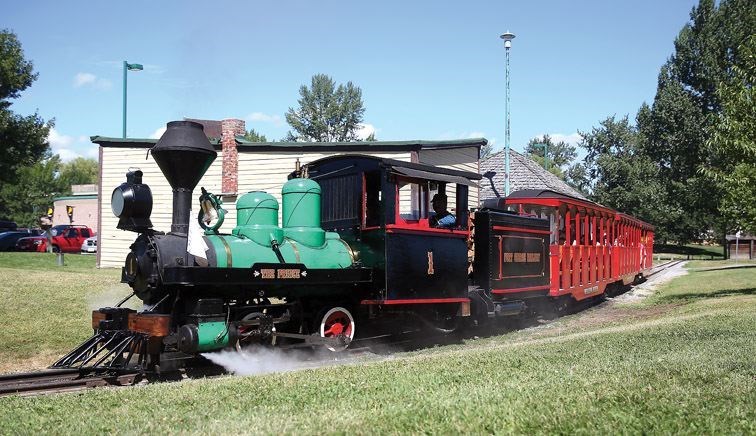Representatives from The Exploration Place will be attending city council Monday night to ask for funding to support the Little Prince train.
Tracy Calogheros, Chief Executive Officer, and John Calogheros, Chief Facilities Officer, for the Exploration Place will be presenting a history of the Little Prince and costs to operate the train, and needs for future operation.
Built in 1912 for Foley, Welchy and Stewart and partnered with a steam shovel, the Little Prince was one of five Dinkie’s used to build the railway grade from Tete Jaune Cache to Prince Rupert.
The engines were abandoned in Island Cache when the work was completed. The Little Prince was repaired using parts from all five in the 1920s by volunteers and installed for display at the railway station on First Avenue from 1926 to 1969.
It was then donated to the city in 1971 and beginning in 1975, rail was laid in Fort George Park by volunteers. Then on July 1, 1978, the Little Prince pulled out of the Fort George Station for the first time pulling passenger cars around the park loaded with passengers.
In 2009, the Exploration Place took over operations of the train from the Fort George Railway Society.
With 2.2 km of track, it is Canada’s shortest railway but transports over 20,000 passengers a year with its six ton engine, three passenger cars, seven licensed engineers and three licensed conductors.
The Little Prince operated only on Thursdays last summer and posted a small surplus of $17,343 for the museum for the first time since 2012.
The museum says that feedback suggests visitors want the train to operate Thursdays to Sundays and on Holiday Mondays and that the engineers want to operate more often as well but the current facility conditions do not meet health and safety standards.
The museum board doesn't want Exploration Place to operate the train unless it will can pay for itself.
To operate for four days a week, the Exploration Place would need a $100,000 per year commitment for three to five years, as well as a new work shed and storage shed.



